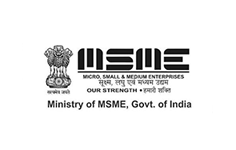Briefings. We’ve all been there. A client outlines what they need, the account manager takes notes, the creative team nods, and the clock starts ticking. But here’s the real truth: most creative breakthroughs don’t come from what’s said—they come from what’s felt, hinted at, or left unsaid.
As someone who’s spent countless hours on client calls, internal brainstorms, and idea-storming sessions, I’ve come to realize that listening (and I mean) really listening isn’t about absorbing what’s written on a deck. It’s about tuning into the unspoken, catching emotional undercurrents, and asking yourself: What does this brand really want to say but isn’t quite able to put into words yet?
Let’s unpack what it means to “listen beyond the obvious,” and why it’s an essential muscle for every copywriter, brand strategist, and creative mind out there.
1. The Written Brief Is Just the Starting Point
A creative brief is like a recipe. It tells you what’s needed, but it doesn’t capture the flavour. It rarely tells you about the client’s insecurities, what didn’t work in the past, or that one competitor they’re obsessed with beating.
Most briefs cover the “what.” But to crack powerful work, you need the “why now,” “why this way,” and “why it matters to the audience.”
That requires listening between the lines. Reading tone. Noticing excitement or hesitation. Picking up on contradictions. Because insight lives in nuance. And creativity thrives on context.
2. People Struggle to Articulate What They Really Want
Clients are human. They have goals, bosses, and KPIs. And often, they’re not trained to express creative visions in a way that makes sense to a copywriter or designer.
Sometimes they’ll say:
-
“Make it pop.”
-
“Give it a fresh vibe.”
-
“It should connect emotionally.”
Vague? Yes. But also a clue.
Your role isn’t to get frustrated. It’s to decode. To ask:
What does “fresh” mean to this brand’s audience?
What kind of emotion? Joy? Urgency? Nostalgia?
When you understand their emotional need, not just their verbal brief, you create work that resonates.
3. Compassion Is a Creative Tool
I would in fact begin my list with this lesson they don’t teach in copy school: Compassion helps crack briefs.
Creative teams often joke about difficult clients. But what if we tried understanding them instead? Many clients are under pressure to “look innovative,” “do more with less,” or “launch yesterday.” When we approach the conversation with empathy, not ego, we spot truths we might have otherwise missed.
And when we get that, we don’t just become service providers, we become partners.
Ad fact: In the 1980s, Apple’s “Think Different” campaign was born from understanding the emotional need of the brand to reassert itself. It wasn’t about features. It was about identity. Compassion powered clarity.
4. Great Insights Often Arrive Quietly
Every brainstorm has that moment. The third or fourth round of thoughts where someone says, “Okay this might be stupid, but…”
And suddenly, boom. There’s the real idea.
This is because the first ideas are usually loud, familiar, and safe. The deeper ones become game-changers. They often are whispered and surface when there’s trust, space, and a willingness to explore beyond the obvious.
As a copywriter or strategist, your job is to hold space for that whisper.
Tip: Ask reflective questions in the briefing stage.
-
“What keeps your customer up at night?”
-
“What do you wish your brand was known for?”
-
“If this campaign could change just one perception, what would it be?”
5. The Most Powerful Copy Comes From Emotional Truths
We live in a world where everyone’s trying to out-shout each other. But ideas that hit home, like Dove’s Real Beauty, or Google’s Reunion, don’t rely on gimmicks. They rely on deep human insight.
And those insights don’t show up in a marketing brief. They emerge when you ask, What is this brand feeling? What is the customer feeling? And how do we bridge that gap?
6. Why “Listening Beyond the Obvious” Isn’t Just for Work
Zoom out for a second. This is more than a creative tool. It’s a human superpower. In our everyday lives, people often don’t say what they mean. They hint. They trail off. They use silence.
Learning to listen deeply. To observe pauses, body language, emotional weight helps you become not just a better writer, but a better human.
And as copywriters, what else are we doing if not reflecting the human experience back to itself?
7. In the AI Era, Listening Becomes a Competitive Edge
Let’s be honest: AI tools are leveling the playing field. Anyone can generate a decent campaign idea now.
But great creative still requires human interpretation, intuition, and insight.
If you’re the one who listens deeper, asks sharper questions, and catches the unspoken tension in a brief—you’ll always be the one creating work that truly moves people.
Because let’s face it: clients don’t remember who wrote fast.
They remember who understood them best.











